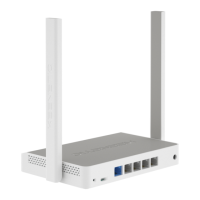secret cryptographic key. As with any MAC, it may be used to
simultaneously verify both the data integrity and the authentication
of a message. Any cryptographic hash function, such as MD5 or SHA-1,
may be used in the calculation of an HMAC; the resulting MAC algorithm
is termed HMAC-MD5 or HMAC-SHA1 accordingly. The cryptographic
strength of the HMAC depends upon the cryptographic strength of the
underlying hash function, the size of its hash output, and on the size
and quality of the key.
Idempotence is the property of certain operations in computer science, that they
can be applied multiple times without changing the result beyond the
initial application.
Internet Control Message
Protocol
is a message control and error-reporting protocol between a host
server and a gateway to the Internet. ICMP uses Internet Protocol (IP)
datagrams, but the messages are processed by the IP software and
are not directly apparent to the application user.
Internet Group
Management Protocol
is an Internet protocol that provides a way for an Internet computer
to report its multicast group membership to adjacent routers.
Multicasting allows one computer on the Internet to send content to
multiple other computers. Multicasting can be used for streaming
media to an audience that has "tuned in" by setting up a multicast
group membership.
Internet Key Exchange is a standard protocol IPsec, used to ensure the safety of interaction
in virtual private networks. IKE purpose is to establish a secure
authenticated communication channel by using the Dife–Hellman key
exchange algorithm to generate a shared secret key to encrypt further
IPsec communications.
Internet Protocol is the principal communications protocol in the Internet. The rst major
version of IP, Internet Protocol Version 4 (IPv4), is the dominant protocol
of the Internet. Its successor is Internet Protocol Version 6 (IPv6).
Internet Protocol Control
Protocol
is a network control protocol for establishing and conguring Internet
Protocol over a Point-to-Point Protocol (PPP) link. IPCP uses the same
packet exchange mechanism as the Link Control Protocol. IPCP packets
may not be exchanged until PPP has reached the Network-Layer
Protocol phase, and any IPCP packets received before this phase is
reached should be silently discarded.
Internet Protocol Security commonly called IPsec, is a protocol suite for secure Internet Protocol
(IP) communications by authenticating and encrypting each IP packet
of a communication session. IPsec includes protocols for establishing
mutual authentication between agents at the beginning of the session
and negotiation of cryptographic keys to be used during the session.
IPsec can be used in protecting data ows between a pair of hosts
(host-to-host), between a pair of security gateways
(network-to-network), or between a security gateway and a host
(network-to-host). Internet Protocol security (IPsec) uses cryptographic
security services to protect communications over Internet Protocol (IP)
networks. IPsec supports network-level peer authentication, data origin
authentication, data integrity, data condentiality (encryption), and
replay protection.
Keenetic Lite (KN-1310) — Command Reference Guide
293
Glossary

